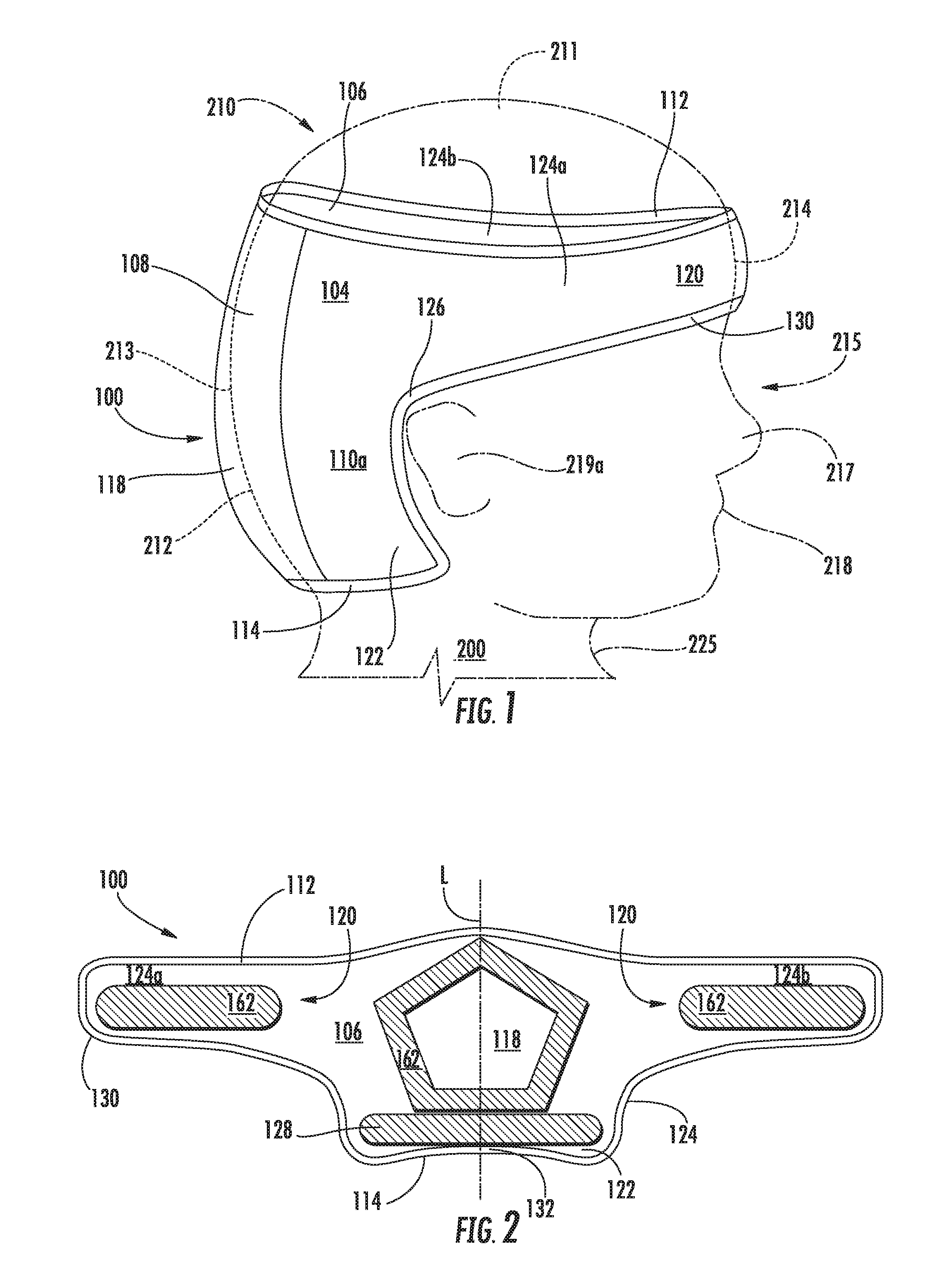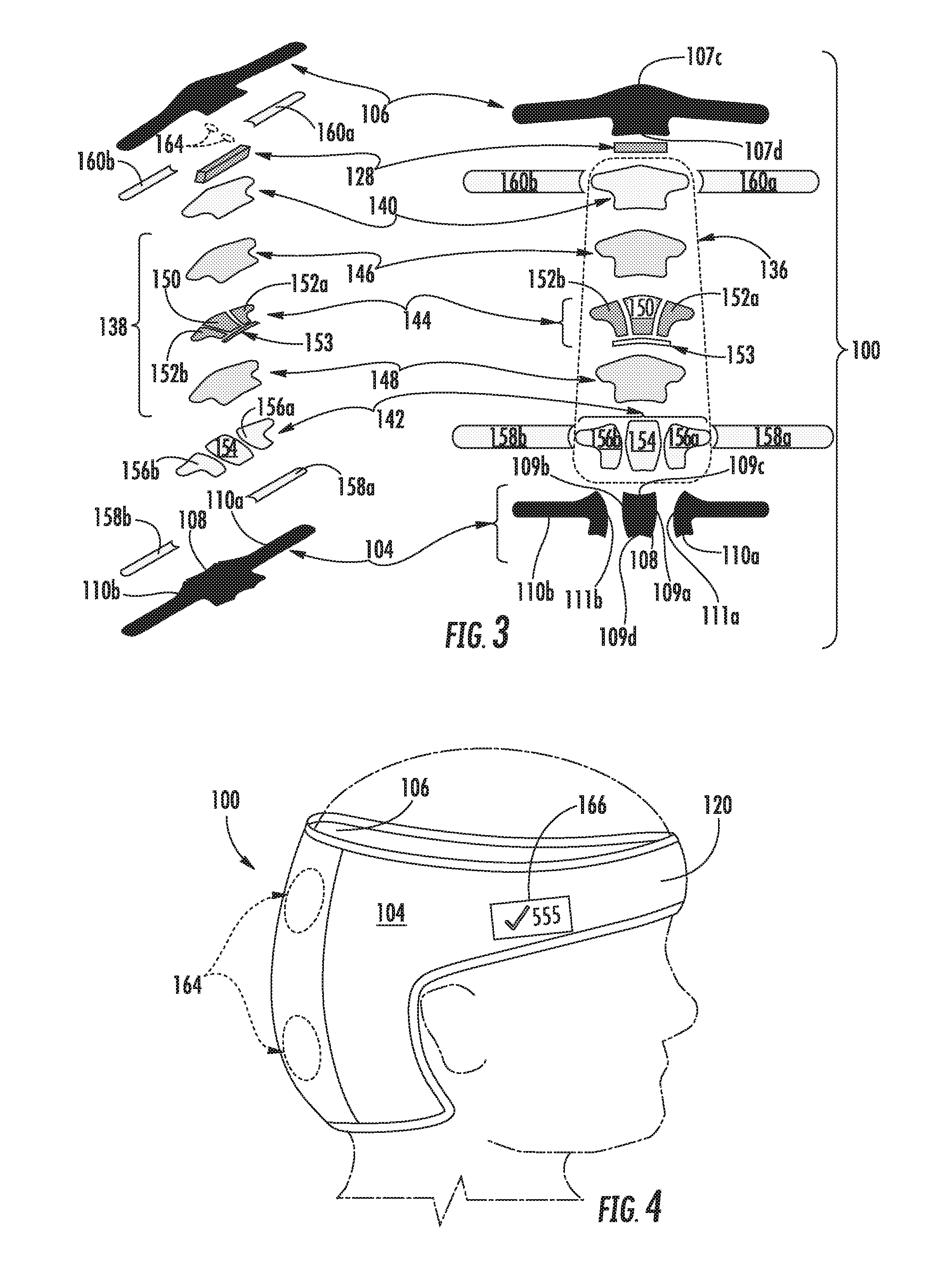Cranial position orientation detection method and apparatus for pediatric patients
a technology for detecting the orientation of the cranial position and the patient, which is applied in the field of medical devices and can solve the problems of cranial deformation, children with deformational plagiocephaly have an increased risk of developmental impairment or delay, and optimal solutions have not been presented, so as to promote the proper development of the head and reduce the compressive force, the effect of reducing the inciden
- Summary
- Abstract
- Description
- Claims
- Application Information
AI Technical Summary
Benefits of technology
Problems solved by technology
Method used
Image
Examples
examples
[0104]In an unexpected finding, the gel layer 144 dimensioned between about 5 mm and about 10 mm in thickness was dramatically effective at distributing force in a simulated use both by decreasing peak pressure and by increasing the contact area. Indeed, it performs remarkably well in comparison to toroidal pressure distributing devices that are 50% to 400% thicker, dimensioned between about 15 mm and about 20 mm. However, despite being approximately two to three times thicker than the gel layer 144, toroidal pressure distributing devices provide no better pressure reduction. Moreover, the enveloping of the infant's head that the force-distributing cranial support 100 affords provides an inherent stability that may promote a safer or more comfortable environment.
[0105]Without being bound to a particular theory, the overall shape and fit of the force-distributing cranial support 100 in combination with the particular aqueous concentration of the gel layer 144 and relative thinness of...
PUM
 Login to View More
Login to View More Abstract
Description
Claims
Application Information
 Login to View More
Login to View More - R&D Engineer
- R&D Manager
- IP Professional
- Industry Leading Data Capabilities
- Powerful AI technology
- Patent DNA Extraction
Browse by: Latest US Patents, China's latest patents, Technical Efficacy Thesaurus, Application Domain, Technology Topic, Popular Technical Reports.
© 2024 PatSnap. All rights reserved.Legal|Privacy policy|Modern Slavery Act Transparency Statement|Sitemap|About US| Contact US: help@patsnap.com










